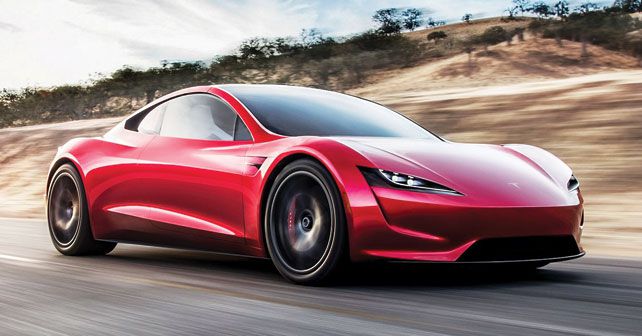
Jens shines a light on some of the disruption in the world of e-mobility.
Say what you want about electrics, but this new and dynamically evolving market segment is always entertaining. For an especially memorable example, look no further than Tesla. In mid-November, Elon Musk put on one of his legendary shows and used the launch of a large truck called the Tesla Semi for the unveiling of yet another future model – the second generation of Tesla’s first model, the Roadster.
Once the truck presentation was over – and it was impressive by itself – the stage turned dark, and a red Roadster, piloted by chief designer Franz von Holzhausen, took off at lightning speed, circled back and parked next to its master, Elon Musk himself. The assembled masses broke into cheers.
Musk called the Roadster a “hard-core smack down to gasoline cars” and gave some numbers to back it up. It’s supposed to reach 96km/h in 1.9 seconds, 160km/h in 4.2 seconds, the quarter mile in 8.8 seconds, and a terminal velocity of over 402km/h. And that’s just for the standard version, as he said with his trademark modesty. The range is supposed to be 1,000 kilometres, and prices will start at 200,000 dollars. It’ll hit the market in 2020.
If the Roadster, which isn’t actually a roadster but rather a 2+2 coupe with a targa roof, does indeed deliver these numbers, it actually seems like a pretty good deal. But until we’ve driven it, count us among the sceptics. Tesla has consistently overpromised on its targets, and if the real-life performance of the Model S and Model X is an indication, it won’t be able to deliver the performance repeatedly and consistently. A current Tesla that’s driven hard builds up temperature rapidly, and it cuts performance sharply.
Moreover, the Roadster – and the Semi – are a distraction from the delayed market launch of the Model 3, Tesla’s first mass-market model that is late to market and hampered by a rocky launch. The company is supposedly sitting on almost a half million paid reservation and needs to crank out these cars quickly – and with significantly higher quality than the current models.
Chaos at Faraday Future
Meanwhile, desperation prevails at Tesla’s competitor – Faraday Future. CFO Stefan Krause, a former BMW and Deutsche Bank member of impeccable reputation, left the company – together with chief engineer Ulrich Kranz of “BMW i” fame. Krause had desperately tried to secure funding for Faraday Future. The FF91 is close to series production, and, in many ways, is an electric that seems to be superior to the Tesla Model X.
This March, FF had sent out an effusive press release, praising Krause as “an indispensable asset to Faraday Future.” Now, instead of sugar-coating his departure, the company has published a hair-raising release under the title, “The Immediate Termination of Employment and Legal Action Notice Regarding Mr. Stefan Krause.” It explicitly alleges a “possible violation of law and lack of contribution to FF’s goals over the course of his leadership,” which “has led to severe damage to the interests of FF and its investors.” It further goes on to state that FF “is currently taking legal action, as a result of Stefan Krause’s malfeasance and dereliction of duty.” Kranz, FF continues, hasn’t left a mark on their R&D efforts.
The unbelievable release mirrors the style of FF chief Yia Yueting, or “YT” – who, himself, is virtually under house arrest. We hear there’s an exodus of talent at FF, and that’s a real shame – as the cars deserve to hit the market.
Fisker is big on promises
Another early player in e-mobility is back – Henrik Fisker. His “EMotion” will hit the market next year, and beyond the initial battery pack, Fisker talks about solid-state batteries that will be recharged within a minute.
Fisker is a visionary, but Professor Werner Tillmetz, who researches hydrogen and solar energy, is pouring water into the wine. “For 800 kilometres, you need 120 kWh of batteries. To charge these within a minute, you need 7,000kW of charging power.” He calls the announcements “entirely unrealistic, and unnecessary.”
Unrealistic and unnecessary they may be, but they are entertaining all the same – much like a lot of the e-mobility promises that we’ve been treated to over the past few years.























Write your Comment